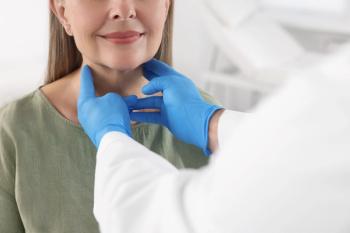
Study Shows Growing Confidence in Cell and Gene Therapies Across the Care Continuum

Key Takeaways
- Oncologists are increasingly familiar with CGTs, but barriers like cost, coverage, and perceptions of risk hinder wider adoption.
- Payers acknowledge CGTs' transformative potential but require more long-term data and transparency for confident coverage decisions.
Oncologists increasingly embrace cell and gene therapies, yet barriers like cost and perceptions of risk hinder broader adoption.
Recent findings from InspiroGene by McKesson's second annual 2025 Cell and Gene Therapy Report: Advancing the Future of Medicine reveal encouraging signs of progress—more oncologists are now administering these therapies, and payer confidence in their safety and value is growing. Yet key barriers remain, from cost and coverage limitations to persistent perceptions of risk and uncertainty. In this Q&A, Joe DePinto, head of cell, gene, and advanced therapies for McKesson, discusses what’s driving adoption, how pharmacy teams can help expand access, and where collaboration across the care continuum will be most critical in the years ahead.
Pharmacy Times: The report shows that oncologists are becoming more familiar with cellular and gene therapies (CGTs), yet many still view them as experimental. What do you see as the key barriers to wider adoption of these therapies?
Joe DePinto: We conducted a double-blind survey of more than 125 US oncologists for the second consecutive year. The results show growing familiarity and experience with CGTs—60% said they’re very familiar with CGTs, up 5% from last year, and more are now treating patients with these therapies. In fact, the share of oncologists in our survey who administer CGTs rose from 55% in 2024 to 64% in 2025, signaling deeper firsthand engagement with these treatments. Still, many remain disappointed by the slow pace of progress in removing structural and financial barriers to wider adoption.
Two major challenges stand out. First, despite increased experience, 65% of oncologists say CGTs are “largely unproven,” and 66% say their patients see CGTs as “risky or experimental.” Overcoming these perceptions will require expanded clinical education and more long-term durability data—and more than half of oncologists agree education and durability data must be prioritized to increase access to CGTs.
Reimbursement remains a significant concern. About three-quarters of oncologists in our survey cited insurance coverage and patient costs as top reasons why patients referred for CGT ultimately don’t receive it. Many say the US health care system isn’t aligned with the costs of CGT delivery—but there’s optimism that alternative payment models could help close that gap.
Overall, oncologists’ confidence in CGTs remains strong, but broader access will depend on making these therapies easier to deliver and more sustainable to fund.
Pharmacy Times: Payers recognize CGTs’ potential but remain cautious about costs and long-term outcomes. How can stakeholders, including pharmacy teams, help demonstrate the value of these therapies to payers?
DePinto: While much attention is often given to the clinical delivery and development of CGTs, payers play an equally critical role. Without clear coverage pathways and reimbursement strategies, these therapies may be out of reach for the patients who need them most.
We conducted research with payers from national, regional, and government health plans, including Medicare and Medicaid managed care organizations, to better understand their views on CGT coverage, and our findings challenged some common assumptions. Far from being inherently skeptical, 90% of the payers interviewed said CGTs are among the most important medical advances of our time, 80% believe they are effective, and 90% consider them safe for clinical use. These responses suggest that most payers recognize the transformative potential of CGTs.
That said, concerns remain—particularly around long-term durability. Many payers noted that evaluating the value of CGTs is difficult without 5 years or more of follow-up data, which is available for only a portion of approved therapies. Payers also want more transparency: They requested greater clarity on where and how therapies are delivered, the clinical rationale behind treatment decisions, and consistent reporting on patient outcomes. Stronger collaboration with treatment centers can help payers assess performance at scale and make coverage decisions with confidence.
Stakeholders, including pharmacy teams, can help by providing structured data, clear clinical context, and ongoing outcomes tracking—giving payers the evidence they need to support broader coverage of these transformative therapies.
Pharmacy Times: The number of qualified treatment centers has not grown much over the past year. From a pharmacy perspective, how can hospital and community pharmacists help expand access to CGTs?
DePinto: A key solution to the shortage of qualified treatment centers is expanding CGT care into community sites. Broadening care to community hospitals and clinics will enable patients to access therapy without traveling hours to academic medical centers for long-term stays. However, growth of these centers has been slow due to a number of factors, including the lengthy timelines required for accreditation as authorized treatment centers. This bottleneck underscores the need for alternative pathways to expand access.
In our report, we created the first comprehensive map of qualified treatment centers for cell and gene therapies across the US, confirming that most care is concentrated in academic centers and major health systems in densely populated areas.
Specialty pharmacy services play a critical role in helping providers manage the intricate reimbursement and logistical processes that come with CGTs. They provide an important source of optionality for community hospitals that may have budget constraints around acquiring CGT products, especially as the number of commercially available therapies continues to grow. By shifting some of the financial and operational risk of nonpayment or underpayment, specialty pharmacies can help strengthen local infrastructure and equip community teams to meet CGT standards, helping bring this care closer to patients and accelerate the expansion of treatment beyond major metropolitan centers.
Pharmacy Times: Innovative payment models are being explored to address CGT costs. What opportunities exist for pharmacists to contribute to these models, particularly around tracking clinical outcomes or adherence?
DePinto: In our research and conversations with both providers and payers, we heard broad support for innovative payment models—but also a clear recognition that there are still big challenges to making them work in practice. One of the biggest barriers is member portability: Payers are understandably hesitant to invest in a one-time therapy when another payer might ultimately benefit from the outcomes. Because of that, there’s growing interest in tools that can better track outcomes, improve transparency, and enable smoother data sharing across stakeholders.
Payers and providers have historically been open to innovative payment models, but there are concerns about clear and measurable value end points. Specialty pharmacies can play a role in helping to collect and aggregate outcomes data, making it easier to consistently measure the effectiveness of these therapies.
Pharmacy Times: Looking ahead, what do you see as the biggest opportunities and challenges for both providers and pharmacy teams in advancing CGT care over the next few years?
DePinto: It’s hard to make predictions with certainty given how quickly the CGT field is evolving, but one thing is clear—the pace of innovation isn’t slowing down. With hundreds of therapies already in late-stage development, we’re going to see growing demand for both manufacturing and treatment capacity, and the real question is how fast we can scale to meet it.
That’s going to take collaboration across the entire ecosystem—manufacturers, payers, providers, pharmacists, and policymakers all working together—to make sure we’re ready as more therapies are approved and more patients become eligible.
Readiness will definitely be a challenge, especially for community providers who may still face barriers around cost, staffing, and operational complexity. But the opportunity ahead is huge. We’re seeing CGT science move well beyond oncology and rare diseases into areas like autoimmune disorders, diabetes, and even heart failure. For pharmacy teams and providers alike, staying connected, informed, and ready to adapt will be key to realizing the full potential of these therapies.
Newsletter
Stay informed on drug updates, treatment guidelines, and pharmacy practice trends—subscribe to Pharmacy Times for weekly clinical insights.


















































































































































































































